The Google Play Store may have millions of different apps, but it doesn’t always have what I want.
The vast landscape of Android apps extends far beyond the confines of the Google Play Store. As users increasingly seek unique applications and services, sideloading has emerged as a powerful solution. This guide will walk you through the process, offering insights into why sideloading is becoming a popular choice among users.
Have you ever tried to install an app and saw this message instead?

Or worse yet, have you ever gone looking for a specific app like Amazon Underground or MiXPlorer?
You won’t find them in the Google Play Store.
My thing is, I hate being told “no.”
Especially when there’s no good reason for it. That’s one of the reasons I’m a big fan of using a VPN for Android to get around geo-filtering.
But fear not, my faithful readers. There are ways to get around Google’s defenses.
To do that you’re going to have to learn how to sideload Android apps.
What is sideloading?
First things first…just what is sideloading?
Sideloading, in essence, empowers users to break free from the limitations imposed by mainstream app stores. It provides the liberty to install a diverse range of apps, circumventing restrictions and enabling users to curate their device’s content according to personal preferences.
You’ve probably heard of uploading and downloading, so let me explain sideloading in the same way.
Think of where you’re sitting right now, reading this post on your computer, smartphone, tablet….whatever device you want. Now imagine that “the Cloud”, or “the Internet” is sitting right above your head. It’s like Eeyore gave you his personal little rain cloud and it’s hovering right above your head. Except instead of rain, it’s dispensing this article for you to read.
Anything you want to get from the Internet is a download because that information is coming down to you. Likewise, any time you want to send something to the Internet, you’re sending it up, so it’s called an upload.
That makes sense, right?
Now take your TV box and put it right next to you on the table. You don’t have to do this but just imagine.
You have something that you want to get from the computer\tablet\smartphone to your TV box. That data isn’t going up (upload) or down (download). It’s going to a device on the same level as you. That is sideloading in a nutshell.
Why should you care about Apps sideload?
or…What files can you sideload?
The versatility of sideloading extends to installing apps that are often restricted by device specifications, geographic location, or those not available in conventional app stores. This includes the installation of alternative app stores, custom firmware, ROMs, and a plethora of applications that lie beyond the boundaries of mainstream platforms.
The most common thing you’ll want to do, and probably what led you here in the first place, is to sideload APK (Android application package) files. As I said in the beginning, the Google Play Store puts restrictions on what apps you can see and download.
Personally, I’d like to decide for myself what I can and cannot put on my own device.
That’s the power of sideloading. You can install almost anything because many of the filters and restrictions happen at the App Store level. Sideloading basically gives you the power to put whatever you want on your device.
You can:
- Sideload Android apps via APK or ZIP file
- Apps that are restricted by device
- Apps that are restricted by location (geo-filtering)
- Apps that just aren’t in an app store at all
- Install the Amazon App Store or another alternative app store
- Install custom firmware and ROMs
- Transfer movies or music directly from your PC
Sideloading is more important on TV boxes
For TV boxes, sideloading is especially important for two reasons. TV boxes, sharing similarities with smartphones but differing in terms of screen resolution, often face compatibility challenges in traditional app stores. Sideloading becomes paramount for TV boxes, addressing app minimum requirements and providing a solution for devices lacking Google Play Services.
App’s Minimum Requirements
Apps are coded to be compatible with certain hardware. It can look for that hardware by feature (2GB of RAM, screen resolution, etc.). Or it can look for specific device model numbers if the developer has a really good testing team. This is rare, but I’ve come across it on a few occasions.
Looking for specific hardware can be problematic. Android TV boxes have pretty much the same hardware as your smartphone or tablet, except for one important part.
The screen.
If the app you want to install depends on a certain screen resolution…actually if the app depends on ANY specific screen resolution, you’re in trouble.
The Google Play Store will look at your TV box and decide that it doesn’t meet the minimum requirements to run the app. No app for you.
The Google Play Services
What if your brand-new device doesn’t come with the Google Play Store at all?
This happens when the manufacturer or device is not certified by Google. This not only affects the Play Store but also other Google apps like YouTube, Gmail, and Maps.
It’s less common now than when TV boxes first hit the scene, but I still hear about people buying Android TV boxes that don’t have the Google Play Store pre-installed.
If that happens, the user will have to sideload an alternative app store, or manually sideload every additional app that they want.
A word about Security…
While sideloading opens up a world of possibilities, it comes with security implications. Users must be cautious and follow post-sideloading security measures. Remember, the freedom to install apps from various sources also heightens the risk. Implement additional security measures like enabling App Verification and investing in reliable antivirus software.
It’s not easy to get an app into the Google Play Store. Google checks every app for viruses and other malware before they’re approved and available for download.
Make no mistake: Sideloading apps opens your system up to threats that normally might be caught before they get to you. Every tutorial I’ve seen on how to sideload apps misses the important step of re-securing your device after you’re done. So be sure to stick around to the end of the tutorial.
I’ve written before about how to protect your device against Android TV box viruses and malware. I highly recommend running some sort of virus protection on your device. Even if you only use a free version, it will still help to protect your device.
If you sideload apps, get virus protection. Period.
How to sideload apps
The step-by-step guide to sideloading apps ensures a seamless process. Remember to exercise caution and only enable Unknown Sources temporarily when necessary. Visual aids or screenshots can enhance the user experience and make the guide more accessible.
I will take you through how to install Amazon Underground, Amazon’s app store.
 1. Get a file manager
1. Get a file manager
The first thing you need is some sort of file manager for your Android device. If you’ve already got one installed, you can skip ahead to step 2.
The most popular one, and my favorite, is ES File Explorer. If you don’t have it installed, you can download it from the Google Play Store, or whatever app store came with your device.
I’ve never come across an Android TV box that didn’t come pre-installed with either a file explorer or an app store. The manufacturers usually need one or the other to install their software.
Once you install it, open it up just to make sure that there aren’t any additional setup steps.
2. Enable Unknown Sources
As I’ve said, by default Android will only allow you to install apps from the Google Play Store. Android considers any place else an “Unknown Source.”
Enabling Unknown Sources is a setting found in the Security tab of your main Settings Screen. Depending on your device, it may look slightly different, so I’ll show you two ways to find it. Don’t worry, you’ll only need one of these.
a. Open Settings
This can be different for every launcher, unfortunately. Most companies will put a Settings icon on the main home page which looks like a set of mechanical gears like this one on the bottom row.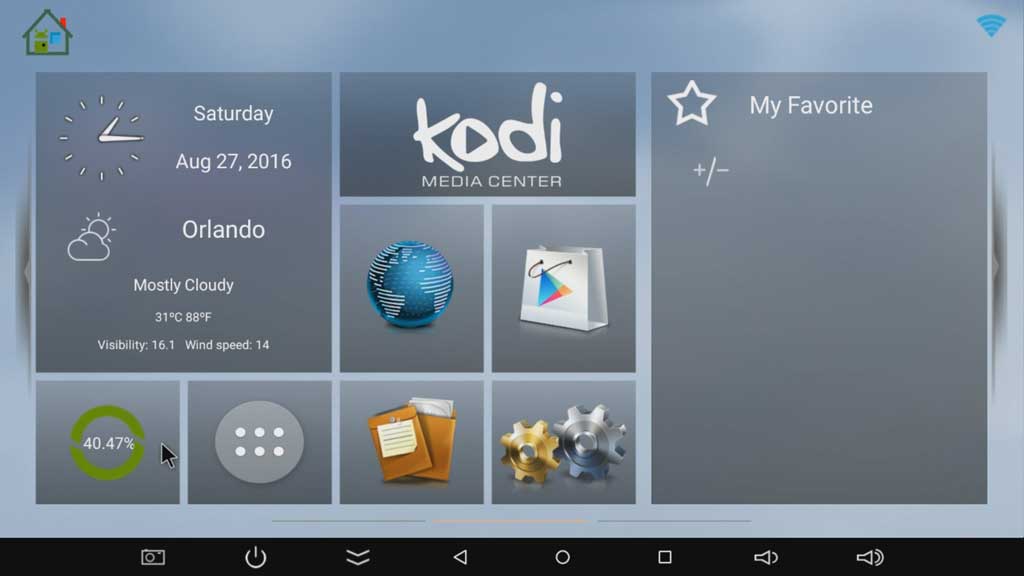
If you don’t see an icon on the main page, go to the screen that shows all of your apps arranged in a row like this. Note: You may have two “Settings” icons on your page, as you see in the image below. You don’t want the “Google Settings” on the top row. The one you’re looking for is the gear-shaped icon in the bottom row, the second one from the right.
b. Go to Security options
The Settings icon will take you to one of two screens, depending on the version of Android that you’re running. The actual options are more or less the same, but the one we’re looking for will be called “Security & Restrictions” or simply “Security.” Your screen should look like one of the following:
Once you find the Security Settings, open that menu by clicking on it.
Here’s where it could get confusing because I don’t think the wording of the setting is very clear, at least on the image on the left. It simply says “Unknown Sources” and “On” or “Off.” The image on the right is much clearer in what it’s asking. But if you have any doubts, click on either and you should get a pop-up box that looks something like this:
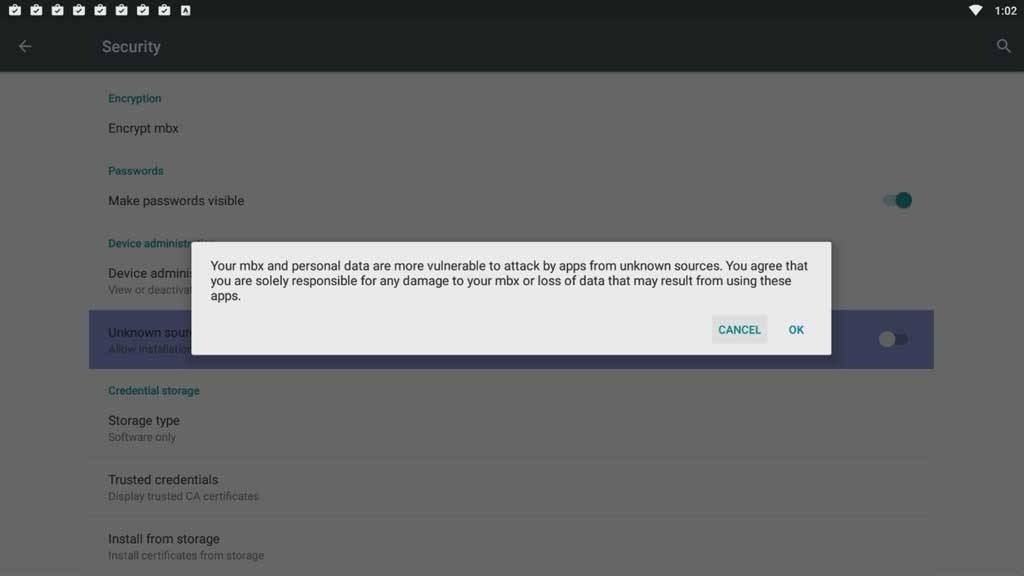
“Your device and personal data are more vulnerable to attack by apps from unknown sources. You agree that you are solely responsible for any damage to your mix or loss of data that may result from using these apps.”
If you don’t understand that warning that means you skipped past my “A Word on Security…” section above. You should go back up and read it. It’s OK. I’ll wait.
3. Download the file you want to sideload
Sideloading was initially used to describe transferring a file from one device to another, but the term has expanded since then. Nowadays we call any type of installation where we are bypassing the normal procedure “sideloading.” In this case, we are bypassing the Google Play Store.
You have a couple of options for how to get the file. If you can download it on the same device that you’re going to install it on later, you’ll end up saving a lot of time.
In our example, remember we are installing Amazon Underground. To download it to your device, go to Amazon.com/underground or you can just do a Google search for “Amazon app store.”

Notice the apps at the bottom of the screen? You would think that the app would be listed there. But you’d be wrong. Those are only the apps that are available for download through…you guessed it…Google Play. The link we want is the one at the top: Amazon.com\underground
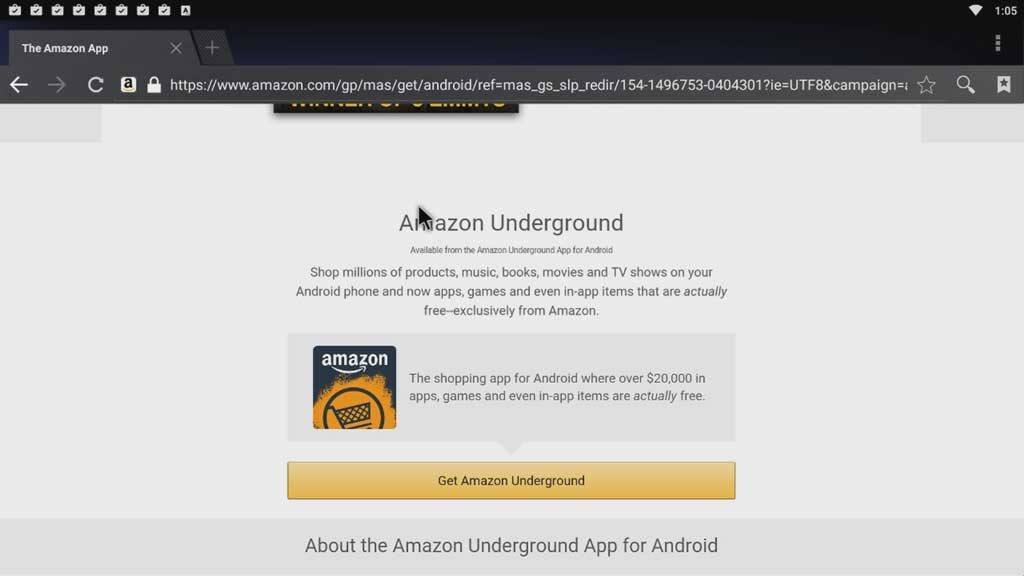
Amazon changes up this page often, but no matter what they do to the top part of the page, there will always be a button or link that looks something like the “Get Amazon Underground” button above. Click on that to begin the download process.
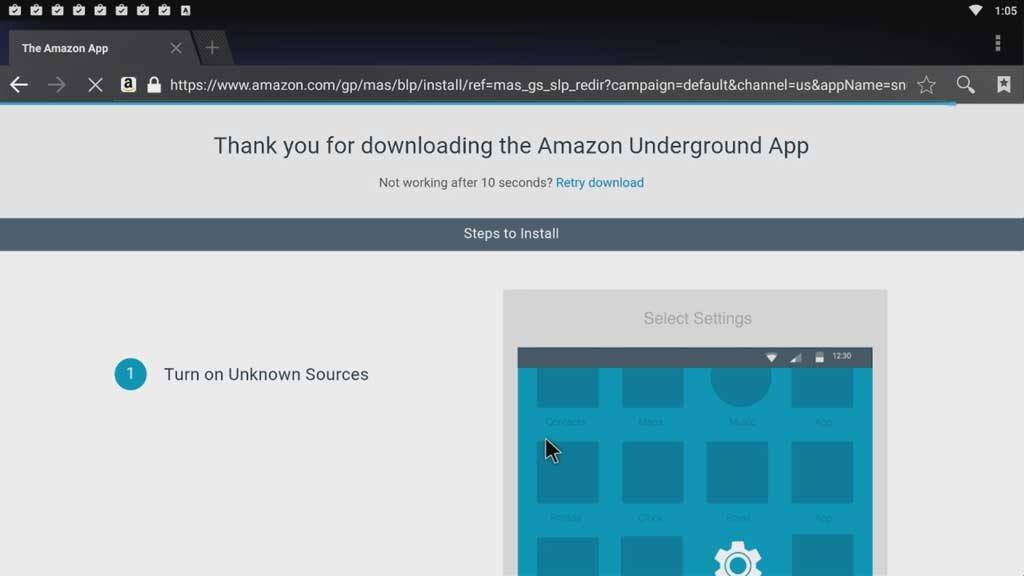
They give you a very brief set of instructions on how to sideload apps from unknown sources, but neglect to mention the security risks involved. While disappointing, it’s not very surprising. To install anything from Amazon Underground the Unknown Sources setting would have to remain on.
But I’ll go more into my recommendations at the end of this tutorial.
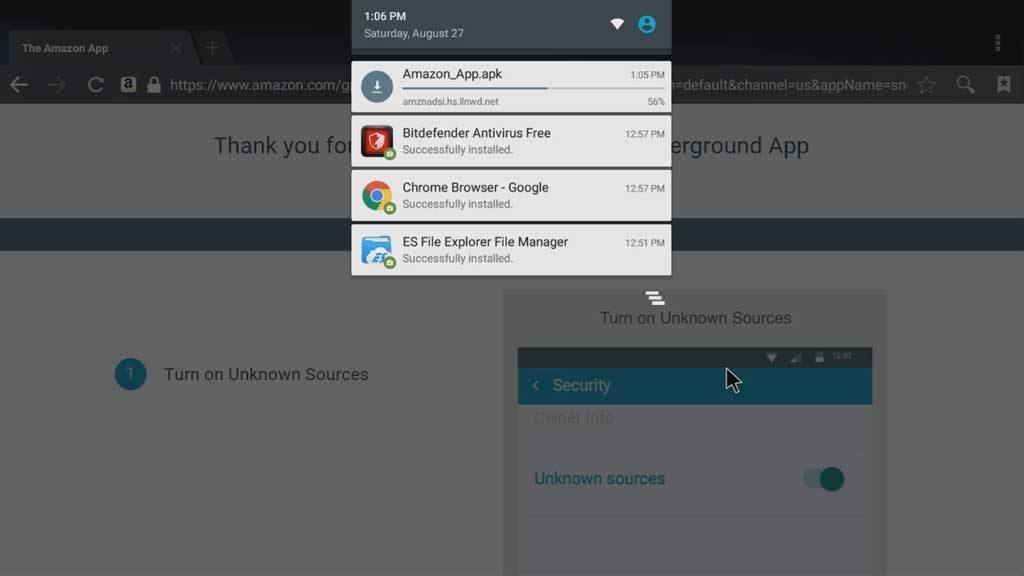
If you were wondering why you installed ES File Explorer first, then here is your answer. Once the file is downloaded, you can open it right from the notification window, as shown above, or through ES File Explorer separately. Either way, having a file manager installed will allow you to open the .apk file directly.
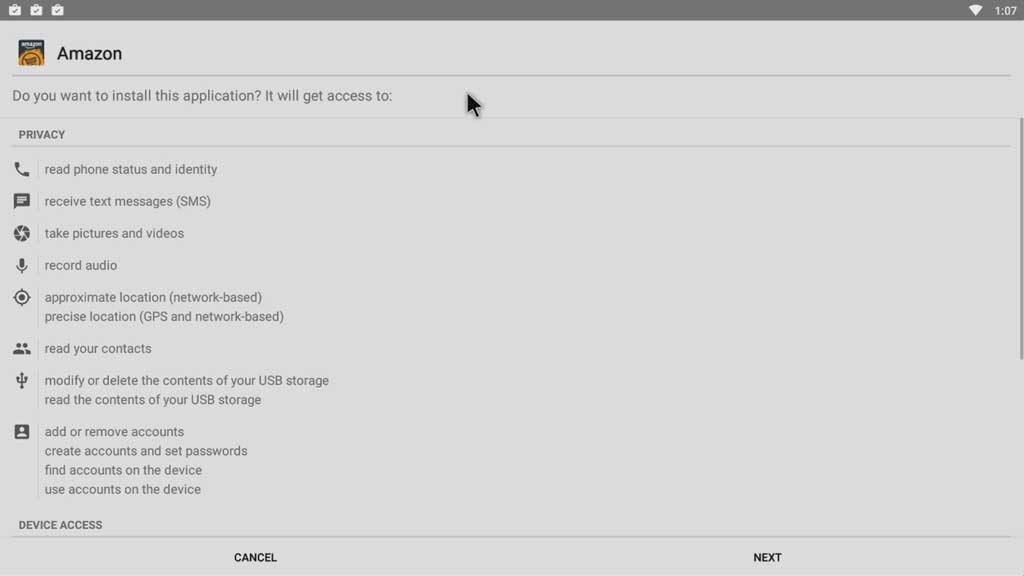
Once you click on the .apk file, you’ll be taken to an installation window. This may look different depending on the file you’re installing, but will usually detail what permissions it is asking for access to.
Remember to make sure that the permissions match the app. For example, if you’re installing a photo editor, you should be a little worried if it’s asking for permission to send and receive text messages.
Once the setup process is complete, you’ll get a simple message saying the app is installed and you’ll have the option to open it.

4. Other methods to sideload Android apps
In addition to the conventional method, users can explore alternative sideloading methods. Cable sideloading via a USB connection or using cloud services like Dropbox provides flexibility and convenience based on individual preferences and available equipment.
If you can’t download the file directly on the device that you want to install, then the process becomes a bit more involved.
Cable Sideload Method
You’ll want to hook up your TV box directly to your PC or Mac using a micro-USB to full-size USB cable like the one below. Usually, your TV box will come with one of these in the box. If not, they’re fairly inexpensive and can be picked up at Amazon or any local electronics store. A decent-quality cable shouldn’t be more than around $5.
If you’re using your PC, Windows will recognize your TV box as any other external device like a flash drive or external hard drive. You’ll be able to navigate through the directory and save your files wherever you like.
A word of caution: Be careful what touch. Changes you make here can cause your Android TV box to become unstable or crash. I highly recommend only putting files in the Download folder or any folders that you have created personally.
Dropbox
I haven’t tried this method personally, but I’ve had a reader tell me that you can use Dropbox instead of a USB cable to transfer a file from your PC to your TV box. He outlined the steps here:
- Download the Android app on your PC
- Upload the file to Dropbox from your PC
- On your TV box, open the Dropbox app
- Download the file to your Download folder
- Open the ES File Explorer and navigate to the Download folder
- Open the app to install it
Final steps to secure your system
After sideloading, securing your system is paramount. Consider enabling App Verification and installing antivirus software to add layers of protection. It’s crucial to stay vigilant about security, especially when venturing beyond mainstream app stores.
As I’ve said before, when you turn on the option to install apps from unknown sources, you remove a layer of security from your device.
I highly recommend only enabling this setting when you are installing an app and turning it back off immediately after you’re done.
That won’t work for everyone. By default, every app on Amazon Underground is technically from “unknown sources.” Anytime you want to install a new app from there, you would have to enable Unknown Sources again.
Most people aren’t going to put up with the hassle.
So what can you do?
 App Verification
App Verification
Google has a setting called App Verification. You’ll find this in the Security section of the Settings page.
If you enable it, it will allow Google to regularly check your device activity for security problems, and prevent or warn about potential harm. That is a nice way of saying that your device will monitor you and take some basic steps to make sure you don’t break anything too badly.
Many people will dismiss it as being too intrusive, but I believe that you can’t ever have too much security for your devices.
 Virus Protection
Virus Protection
You need to take steps to keep your device safe from malware and Android viruses. One of the easiest and most effective ways you can do that is to install some sort of virus protection on your device.
Seriously. If you have a PC, chances are your anti-virus program has a service that will also protect your mobile devices. If not, there are plenty of free options out there as well.
I use BitDefender to keep both my PC and smartphone safe. Even the free version (shown to the left) gives me a piece of mind that something is watching out for any malware that might infect my system.
Conclusion
As you embark on the journey of sideloading, the diverse world of apps awaits exploration. Share your experiences, and let us know – what’s the first app you’re eager to sideload onto your device? Sideloading opens doors to customization and possibilities; embrace it wisely!
There’s a whole world of apps out there besides what we’re used to seeing on the Google Play Store. Hopefully, this tutorial will help you go out and see what you can find. If you come up with any questions, leave them in the comment below and I’ll do my best to answer them.
My question to you: What is the first app that you’re going to sideload to your device? Let me know!

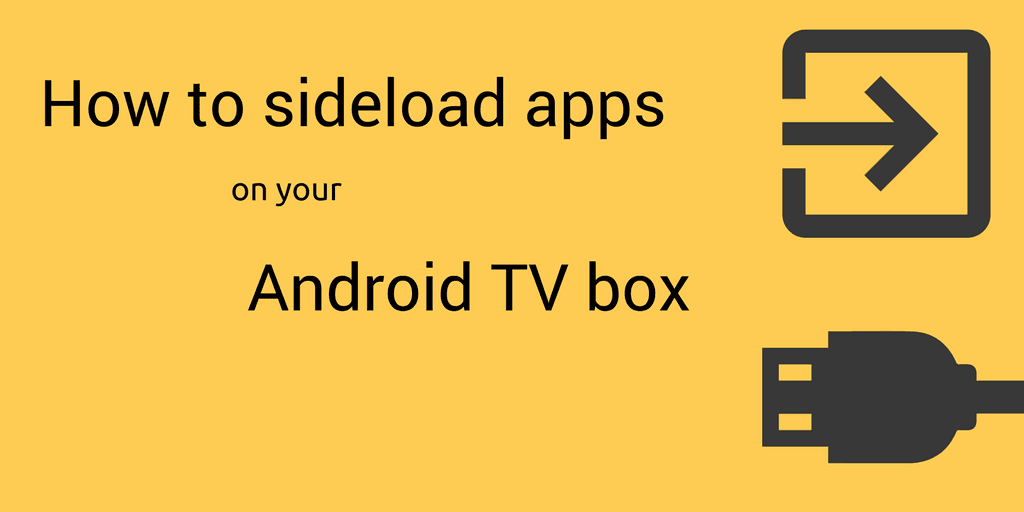
 1. Get a file manager
1. Get a file manager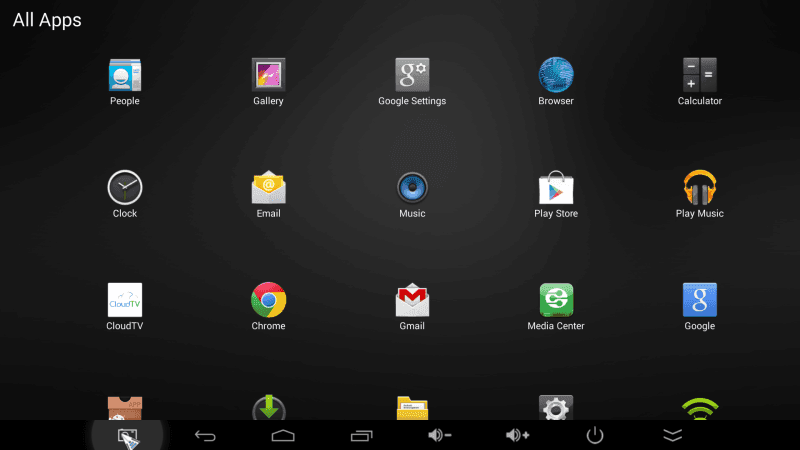
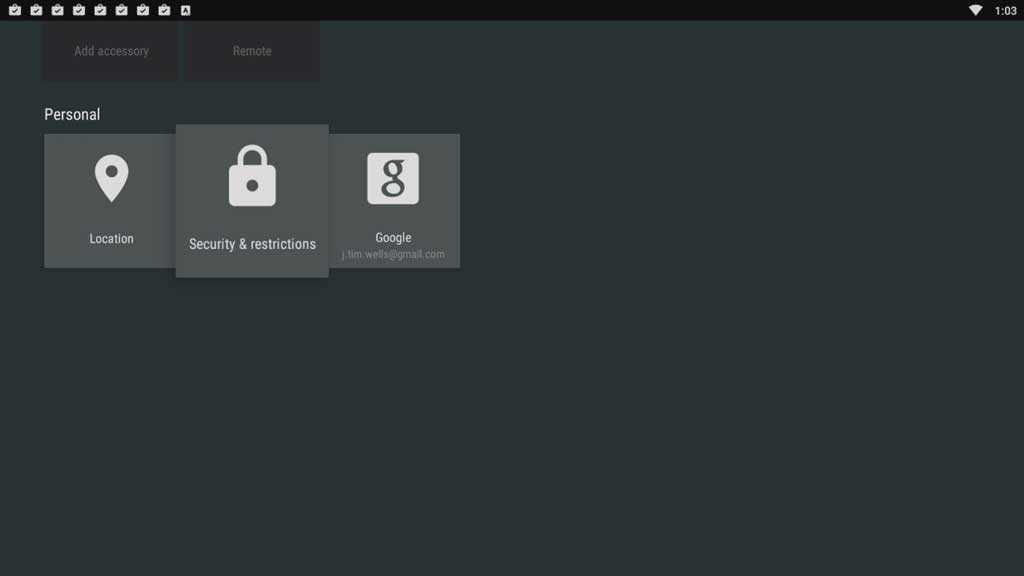
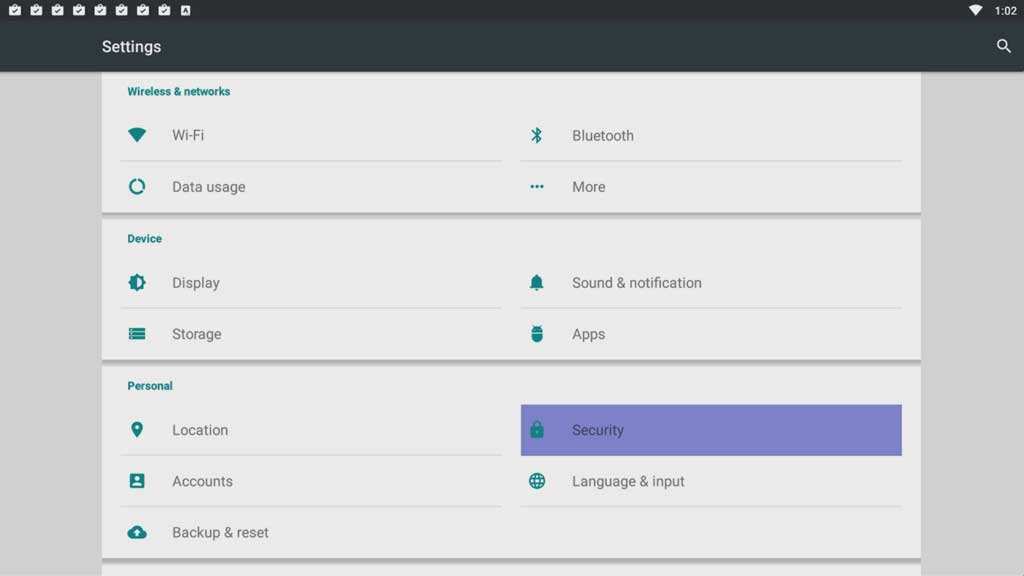




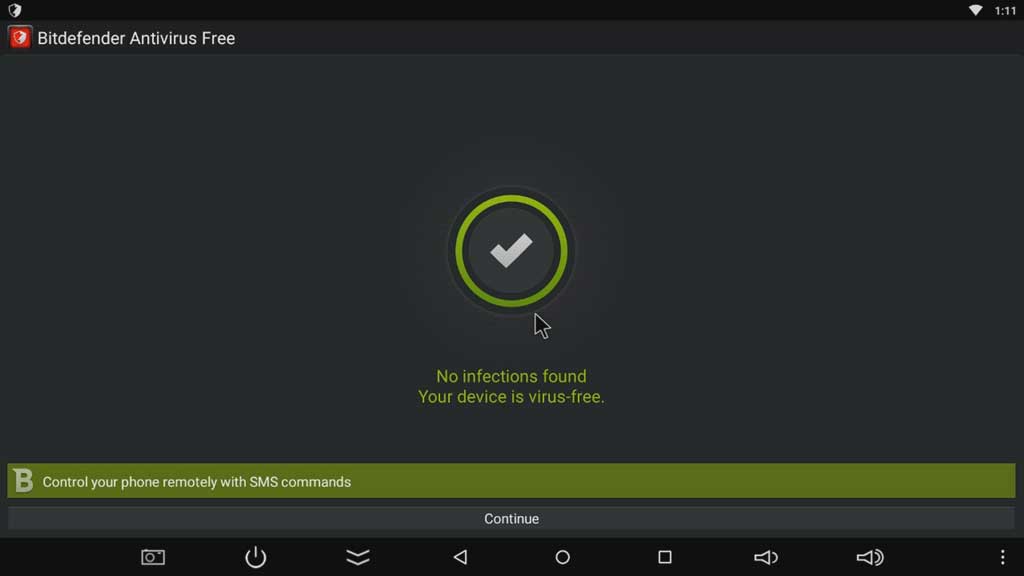



I have just purchased a Scishion V88 TV box that appears to be installed correctly. I am having trouble downloading Show Box. It completes the download but when I go to the apps menu there are no files in the download folder. Note: I have set the security to “install apps from unknown sources”
Is there somewhere else on the system that downloaded files are stored?
Thank you for the detailed information
My android box has several pre-installed Apps and one is called ” Appinstaller. ” I am concern that the 25 apps that I installed are taking up valuable space on the local disk. Am I right? Is this a problem? Shoud I uninstall these apps or leave them alone? Thanks in advance for any help to my question.
I’d uninstall any app that you KNOW you’re not going to use, just to clean things up. Android apps are usually small enough not to make much of a difference in storage. But you can check how much space each app is using in the Settings menu.
On an Android TV (Sony Bravia), after doing all steps succesfully and clickin “Install”, pop up a box with the message “Package installer” and a radio button to click. Then, in the same box, there are two buttons: “Always” and “This time only”, to go on with installation. But you jus’t can’t get to any of the buttons (with the hand control). The TV has two app called “Package installer”: com.google.android.pano.packageinstaller and com.google.android.packageinstaller.
Any idea how to overcome this situation?
I got the same problem, did you find a solution?
I got the same issue. Any solutions?
Plug A Bluetooth mouse and try clicking the button. Also a Bluetooth keyboard may help